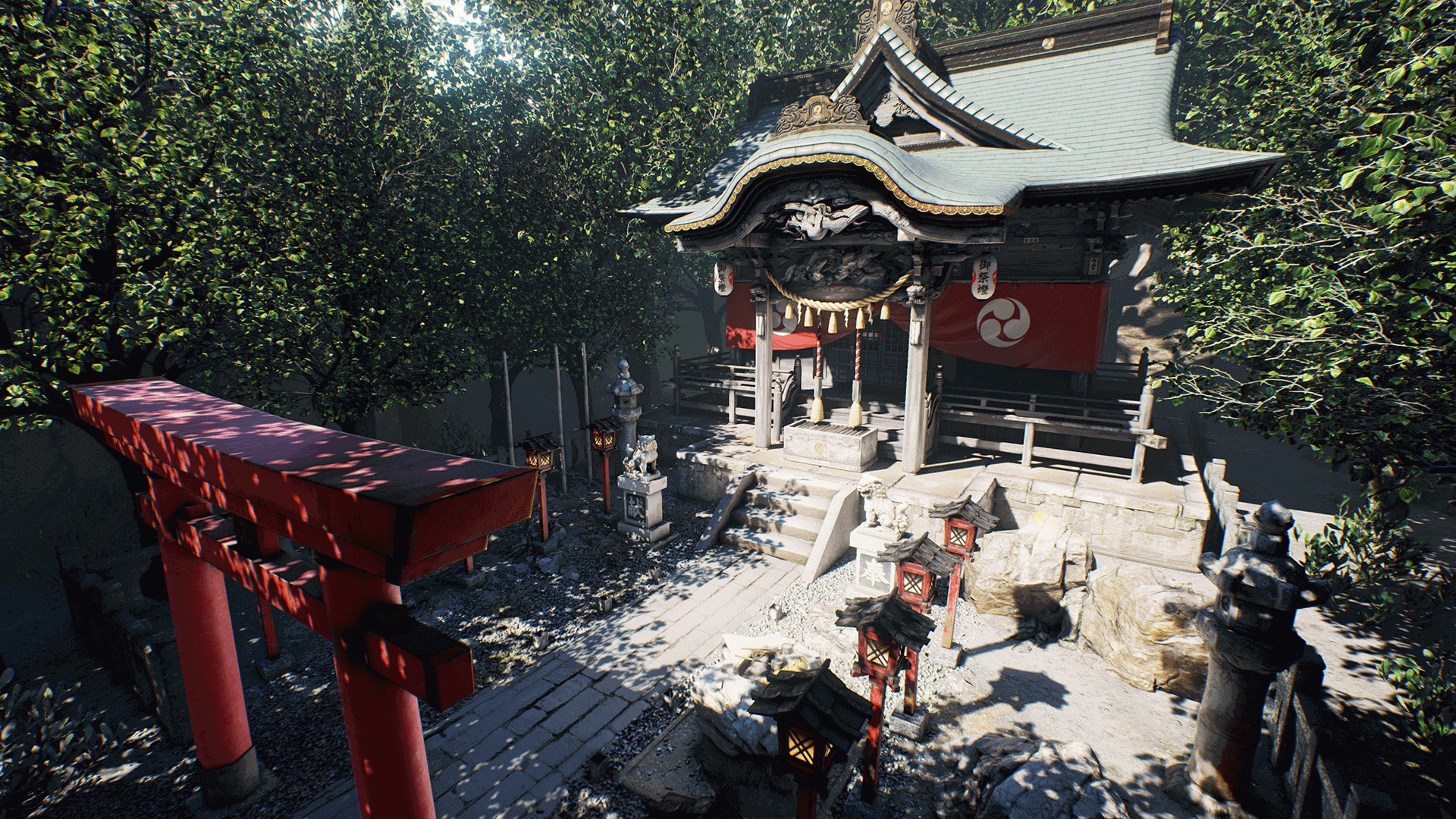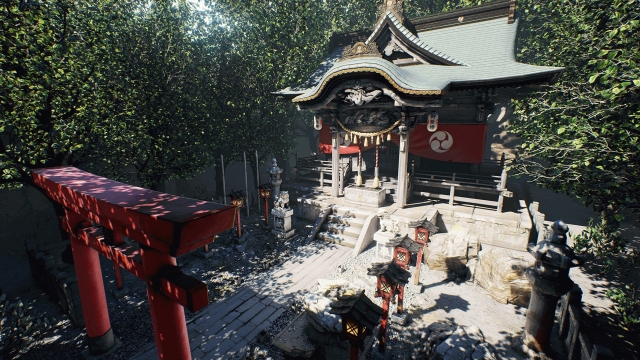
Nestled within the verdant landscapes of Japan, shinto shrines stand as serene sentinels of a rich cultural heritage that stretches back centuries. These sacred sites not only serve as places of worship but also embody the intricate connection between nature and spirituality that defines the Shinto belief system. Each shrine, with its unique architecture and spiritual significance, invites visitors into a realm where tradition meets tranquility, offering a glimpse into the ancient practices that continue to resonate with people today.
As one approaches a shinto shrine, the atmosphere shifts, often imbued with a sense of calm and reverence. The torii gates, vibrant and enchanting, act as gateways to the spiritual world, marking the transition from the mundane to the sacred. Here, one can engage in rituals such as purifying oneself at the chozuya and offering prayers to the kami, the spirits that inhabit these sanctuaries. The enchantment of shinto shrines lies not just in their physical beauty, but also in the deep-rooted symbols and stories they encompass, each telling a tale of nature, divinity, and humanity’s quest for harmony.
The Spiritual Significance of Shinto Shrines
Shinto shrines serve as the heart of the Shinto faith, embodying the connection between the divine and the earthly. Each shrine is dedicated to a kami, a spirit or deity that represents natural elements, ancestors, or aspects of life. This relationship fosters a deep reverence among worshippers, who visit these sacred spaces to honor and communicate with the kami. The architecture and layout of each shrine reflect the unique attributes of the kami it enshrines, creating an environment that inspires contemplation and reverence.
Visitors to Shinto shrines engage in rituals that reinforce their spiritual beliefs. Practices such as purification, offerings, and prayer create a sense of harmony with the kami and the natural world. The act of bowing and clapping at the entrance signifies respect and acknowledgment of the divine presence. These actions transform the shrine into a living space of spiritual interaction, allowing individuals to express gratitude, seek guidance, and reflect on their lives. This engagement is not just a ritualistic obligation; it embodies a yearning for connection with traditions that have persisted through centuries.
The serene surroundings of Shinto shrines further enhance their spiritual significance. Often nestled within tranquil forests or alongside flowing rivers, these locations are chosen to reflect the beauty and peace of nature. The architecture integrates with the landscape, creating a harmonious space where individuals can step away from the chaos of everyday life. This natural setting encourages introspection and fosters a deep sense of calm, allowing worshippers to feel a profound connection with both the kami and the world around them.
Architectural Wonders and Symbolism
Shinto shrines, with their distinct architectural styles, represent a harmonious blend of nature and spirituality. Characterized by their wooden structures, thatched roofs, and the use of natural materials, these shrines are designed to coexist peacefully with their surroundings. The simplicity of their design reflects the Shinto belief in living in harmony with nature, creating a serene environment that invites contemplation and reverence.
One of the most recognizable features of Shinto shrines is the torii gate, which marks the entrance to a sacred space. This symbolic gateway signifies the transition from the mundane to the sacred, inviting visitors to leave behind their everyday concerns. The torii’s striking form, often painted in vibrant vermilion, evokes a sense of protection and reverence for the gods that dwell beyond. Each shrine has its unique dimensions and styles, often influenced by regional aesthetics, yet they all share the common purpose of providing a spiritual refuge.
In addition to their physical structures, Shinto shrines are rich in symbolism that reflects the culture and beliefs of Japan. Many shrines incorporate elements such as sacred wild trees, water sources, and stone lanterns, all of which hold deep significance. Water, for instance, represents purification, encouraging worshippers to cleanse themselves before entering. The intricate carvings and decorative motifs found in these shrines often depict deities, nature, and seasonal changes, reinforcing the connection between the spiritual and natural worlds that lies at the heart of Shinto philosophy.
Rituals and Festivals: A Cultural Experience
Famous Shinto Shrines
Shinto shrines are not just places of worship; they are vibrant centers of community life where various rituals and festivals take place throughout the year. These celebrations often coincide with the changing seasons, agriculture cycles, and significant historical events, drawing together locals and visitors alike. Each festival, known as "matsuri," showcases unique traditions that highlight the spiritual connection between the people and the kami, or spirits, worshipped at the shrines. These occasions feature lively processions, traditional music, and dance, creating an atmosphere of joy and reverence.
One of the most famous festivals associated with Shinto shrines is the Gion Matsuri held in Kyoto. This month-long celebration occurs in July and is renowned for its stunning floats, elaborate costumes, and rich history. Each day sees different events, culminating in a grand procession on the 17th and 24th, where beautifully decorated floats are paraded through the streets. This festival not only honors the kami but also fosters a sense of community as residents come together to prepare and participate in the festivities, strengthening local bonds.
In addition to large festivals, everyday rituals at Shinto shrines contribute to the spiritual life of the community. Visitors often partake in simple yet meaningful practices, such as washing their hands and mouth at the temizuya, offering prayers at the main hall, and purchasing amulets for protection or good fortune. These small acts of devotion keep ancient traditions alive and highlight the importance of nature and harmony in Shinto beliefs. Together, the vibrant festivals and personal rituals at Shinto shrines create a rich tapestry of cultural expression that celebrates both the divine and the everyday.
Preserving Traditions in Modern Japan
In today’s fast-paced world, the enduring presence of Shinto shrines serves as a vital link to Japan’s rich cultural heritage. Amid the hustle of urban life, these sacred spaces provide a tranquil retreat where individuals can connect with their ancestors and nature. The rituals and festivals held at these shrines continue to draw participants from various backgrounds, reinforcing the importance of cultural practices in a rapidly changing society. This ongoing participation helps to ensure that the traditions associated with Shinto remain vibrant and relevant.
The integration of ancient Shinto beliefs into modern life is also evident in various aspects of Japanese society, such as architecture, art, and community celebrations. Many contemporary architects draw inspiration from the aesthetic principles of Shinto shrines, incorporating natural materials and harmonious designs into their projects. This fusion of old and new invites a broader audience to appreciate the ethereal beauty of these sacred sites, allowing the teachings of Shinto to resonate in everyday life. Additionally, local festivals, rooted in Shinto practices, encourage communities to come together, celebrating shared values and fostering a sense of belonging.
As the world becomes increasingly interconnected, the preservation of Shinto traditions faces both challenges and opportunities. With the rise of globalization, there is a risk of cultural dilution; however, there is also a renewed interest among younger generations in exploring their heritage. Efforts to educate people about Shinto beliefs and practices, alongside the promotion of shrine visits and participation in rituals, play a crucial role in keeping these traditions alive. The commitment to preserving Shinto shrines ensures that future generations will have the chance to experience the enchantment and wisdom of their ancestors.


